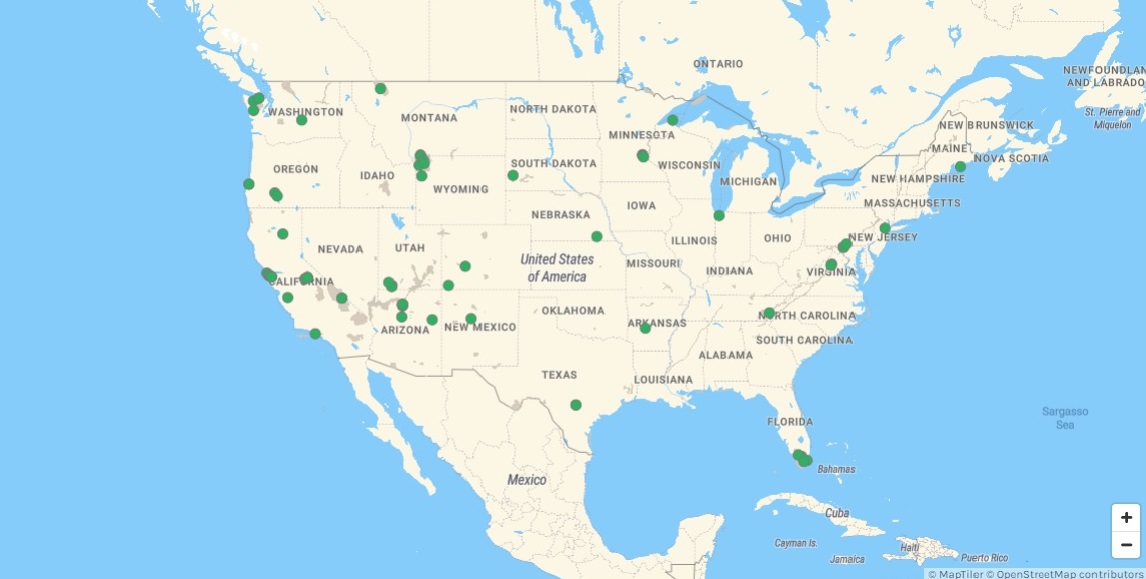Following the passage of the Inflation Reduction Act (IRA), the United States has supercharged its electric vehicle (EV) push. Not only are there tax credits to assist with the cost of buying an EV, but production incentives are boosting the manufacturing of the cars, batteries as well as charging stations.
Building out the EV charging network across the country is seen as crucial to increasing EV adoption, as potential buyers may have “range anxiety,” the worry that there won’t be a charging station where and when it’s needed. To help build the network, President Biden set a goal of adding 500,000 EV chargers, which got a boost with funding announced that will accelerate the creation of zero-emission vehicle (ZEV) corridors that expand the nation’s EV charging infrastructure.
Nick Esch, research analyst for Grid Edge at Wood Mackenzie, noted that public EV charging networks are crucial.
“We are seeing collaboration and integrations among EV charging networks both old and new, as well as significant local and federal policy support, and investment across the public charging market,” said Esch.
The National Renewable Energy Lab (NREL) is doing its part to alleviate range anxiety with a new interactive tool that shows where EV charging sites can be found at any of the United States’ more than 400 national parks, monuments and historic sites.
Developed in collaboration with the National Park Service (NPS), the tool is now live on the NPS.org website and offers up-to-date information on chargers. NREL researchers used the Alternative Fueling Station Locator to help create the map, and it has also automated data collection through an application programming interface (API). The laboratory collects daily updates on eleven different charging networks and the data is imported directly into the Station Locator. Data is also collected manually on any chargers not connected to a network.
“Developing an EV charging map for the National Park Service was a way to harness work that we already do at NREL to track charging infrastructure nationwide,” said Matt Rahill, an NREL software developer. “If we were starting from scratch, this project would have taken much longer. Instead, we were able to leverage the existing data from the Station Locator tool and tailor it for national park visitors.”
The NREL map includes some filters that let users customize the map to show a specific type of charger, the level at which it charges—from 120 to 240 volts, plus DC fast-charging levels of 400 volts or more. Users can also show only the EV chargers located near a specific park or monument. The map will show the hours the charger is open to the public.
“This tool is meant to streamline the visitor experience for those who want to drive an EV to a national park,” said Abby Brown, an NREL transportation project manager who serves as the Station Locator’s data collection lead. For a fuller portrait of the nation’s EV charging landscape and alternative fuel sites, she noted, visitors can check the main Alternative Fueling Station Locator map.
Private cars remain the most convenient way to travel to the National Parks, and The National Park Service is dedicated to carbon reduction by installing the infrastructure to support visitors’ electric and alternative fuel vehicles. The third edition of the Green Parks Plan, launched in 2023, outlines new steps to achieve net-zero greenhouse gas emissions and zero-emission transportation methods.
“The National Park Service serves as a model for environmental stewardship, but we can’t meet our sustainability goals alone: The public plays an integral role in this work,” said Jennifer Madello, division manager for NPS’ Park Facility Management Division. “The new NPS EV charging map, developed with NREL’s support, invites visitors to participate in and contribute to our goals of supporting net-zero emission transportation, climate resilience, and environmental justice.”
This content is protected by copyright and may not be reused. If you want to cooperate with us and would like to reuse some of our content, please contact: editors@pv-magazine.com.









By submitting this form you agree to pv magazine using your data for the purposes of publishing your comment.
Your personal data will only be disclosed or otherwise transmitted to third parties for the purposes of spam filtering or if this is necessary for technical maintenance of the website. Any other transfer to third parties will not take place unless this is justified on the basis of applicable data protection regulations or if pv magazine is legally obliged to do so.
You may revoke this consent at any time with effect for the future, in which case your personal data will be deleted immediately. Otherwise, your data will be deleted if pv magazine has processed your request or the purpose of data storage is fulfilled.
Further information on data privacy can be found in our Data Protection Policy.